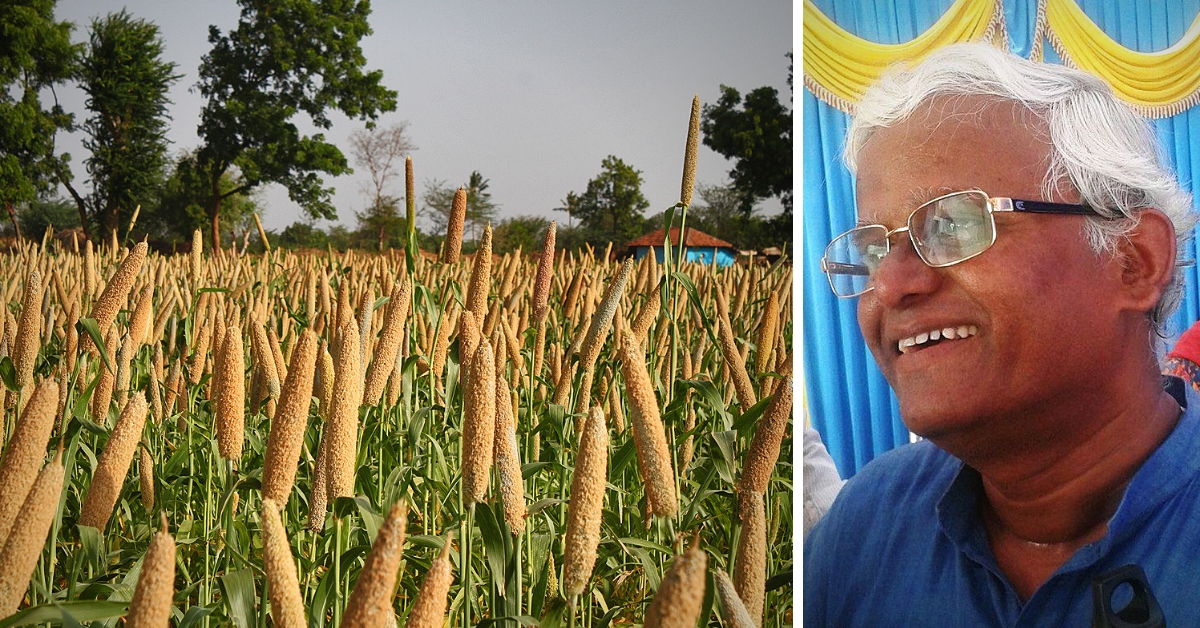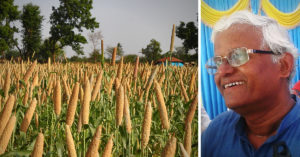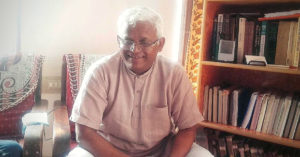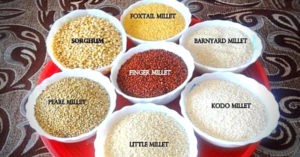Cancer to Diabetes: Mysuru’s Millet Doctor Ditched US Job to Make India Healthy
"I already had an inkling of the dire consequences of our diet. But I woke up to the problem only after I encountered the case of a girl who had begun menstruating at the age of six. I was shocked!"

My great grandmother lived till the age of 94–this, in a country, which holds its average life expectancy rate at only 68 years!
This topic often forms the crux of casual conversations with my grandparents, who reminisce about the ‘pure’ and ‘healthy’ food they consumed during their developing years, which contributed to their good health and long lives, as opposed to the ‘junk and chemical-ridden food’ I eat daily.
But who is to blame here?
Is it my parents or me, who try to buy healthy food available in local stores, without realising the amount of pesticide and fertiliser injected in them?
The answer is neither of us.
A conversation with an expert, Dr Khader Valli, revealed that the problem goes back to the 1960s!

It was the decade which ushered the Green Revolution, which although had its gifts, also robbed India of its most precious golden grain.
In the pursuit to push India’s status from a food-deficient nation to one of the leading agricultural countries in the world, the revolution also pushed farmers away from growing traditional food grains rich in nutrients.
“The dietary preferences were changed during the green revolution. Traditional food grains like millets took a back seat, as they were being considered too primitive for the modern population. The perspective was such that only the poor consume it,” exclaims Dr Khader Valli.
He has dedicated his life to change this discourse; he reveals that millets are indeed, ‘super’ or ‘rich’ grains.
Multi-Millet Granola is a super healthy granola made of super healthy millets, sweetened with honey, flavoured with ginger and cinnamon to make your breakfast more healthy, tasty and wholesome. Add milk or yoghurt and enjoy a guilt-free breakfast. You can also add fresh fruits of your choice to make it tastier. Buy your jar from here!
Speaking to The Better India, he shares that this golden grain once comprised about 40 per cent of all cultivated grains in the country; but the revolution put an end to it. Reduced to growing them mainly for bird feed, production has now come down to an unfortunately low 20 per cent.
Such a fate for India’s miracle grain, which bears the ability to cure several serious diseases like diabetes, obesity, infertility, anaemia, and even cancer!
Yet this was the reality that 61-year-old Dr Valli has been fighting to change.
Originally from Mysuru, Dr Khader completed his BSc (Ed) and MSc (ED) from the Regional College of Education, Mysuru. Later, he went on to do his PhD on Steroids at the Indian Institute of Science, Bengaluru.
After working as a post-doctoral fellow of Environment Science at Beaverton Oregon and working as a scientist at Central Food Technological Research Institute (CFTRI) for three years, he then joined a US-based company, Dupont. He worked there for four years before finding his true calling.
It was almost 34 years ago when irked by an unnatural incident, the US scientist decided to return to India. It led him to the pursuit of the magic grain which can cleanse the human race of its maligned food consumption.
“While working on my PhD, I already had an inkling of the dire consequences of our diet. But I woke up to the problem only around 1986-87 after I encountered the case of a girl who had begun menstruating at the age of six. I was shocked! This and many other such cases got me asking questions to find the root of the problem. I realised that all those questions led to the same destination–the bane of industrial food culture that was maligning our everyday consumption,” says Dr Valli.
He sacrificed his high-paying MNC job, all to recreate a healthy and sustainable society for future generations.

Popularly known as the Millet Man of India, his residence at TK Layout, Mysuru, is flooded with hundreds of patients every morning, all hoping for a miraculous recovery. From elderly patients fighting cancers and diabetes, to even HIV patients, Dr Valli has encountered an array of patients, some of whom were unconventionally challenging.
One such case was of two distraught young lovers who tried to commit suicide by consuming poison after their families refused their marital union. The failed suicide attempt caused a nervous breakdown, with them being bedridden at the KR Hospital in Mysuru. A week later, they approached Dr Valli, who helped them out of their misery.
BBBBBBBBBBBBBBBBBBB
This comes in addition to hundreds of diabetics with gangrenous legs, who after his consultation were able to save their legs, even after they were advised amputation by various doctors.
Today, all of them consider him a miracle worker.
But, the magic, he says, lies in nature, as all he advises them is to change their food choices with minimal medication at a minimal cost.
“Miracles take place once in a while. I treat these patients and cure them consistently, following nothing but simple solutions from nature,” says the doctor.
A simple lifestyle, with the right kind of food, facilitated by the right agricultural practices, is his prescription for a healthier world.

“The usual prescription I give my patients is to eat the five positive grains (Siridhanya) which we used to eat 60 years ago. These include Kodo millets, Barnyard millets, Foxtail millets, Brown top millets, and Little millets,” he says.
Explaining how millets are more nutritious, he adds, “Any food that takes a longer time to break down the glucose and fructose to be absorbed by the blood is truly healthy. While Ragi takes almost two hours to break down, positive grains or millets take more than six hours. As opposed to this, rice only takes 45 minutes to be absorbed by the blood, thus increasing the risk of diabetes.”
Further busting common perspectives which promote whole grains and rice to be nutritious and healthy, he says, “It is nothing but a food conspiracy by the industries that want to sell these products with the healthy label. Many nutritionists even claim that chocolate and non-veg food cause most health issues, but that also is not entirely true. The problem lies in the staples, not the accompaniments. For decades, we have been eating the wrong staples. It is high time people see that and replace them with the healthier and more eco-friendly alternative–millets.”
His body of extensive research on millets is now in the form of a book called Siri Lokam.
According to Dr Valli, these positive grains are not just nutritious for the body but also the soil, thus making both the human race and the environment, healthy.
When asked how it can benefit the soil, he informs me that millets can be grown even in dry land using only 20 cm of rainfall, thus solving the issue of drought which ails almost 60 per cent of the available agricultural land in the country. He also adds that only 200 liters of water are required to grow one kg of millet, as opposed to almost 9,000 liters of water for growing one kg of rice or wheat.
We need to unlearn decades of unhealthy eating choices and go back to our roots for a healthier future,” he concludes.
Also Read: This 15-YO Boy’s Millet YouTube Videos Will Make You Healthy While Helping Farmers
This is the person who has truly ushered in another food revolution, this time a healthy and a sustainable one!
(Edited by Shruti Singhal)
Like this story? Or have something to share?
Write to us: [email protected].
Connect with us on Facebook and Twitter.
If you found our stories insightful, informative, or even just enjoyable, we invite you to consider making a voluntary payment to support the work we do at The Better India. Your contribution helps us continue producing quality content that educates, inspires, and drives positive change.
Choose one of the payment options below for your contribution-
By paying for the stories you value, you directly contribute to sustaining our efforts focused on making a difference in the world. Together, let’s ensure that impactful stories continue to be told and shared, enriching lives and communities alike.
Thank you for your support. Here are some frequently asked questions you might find helpful to know why you are contributing?


This story made me
-
97
-
121
-
89
-
167













